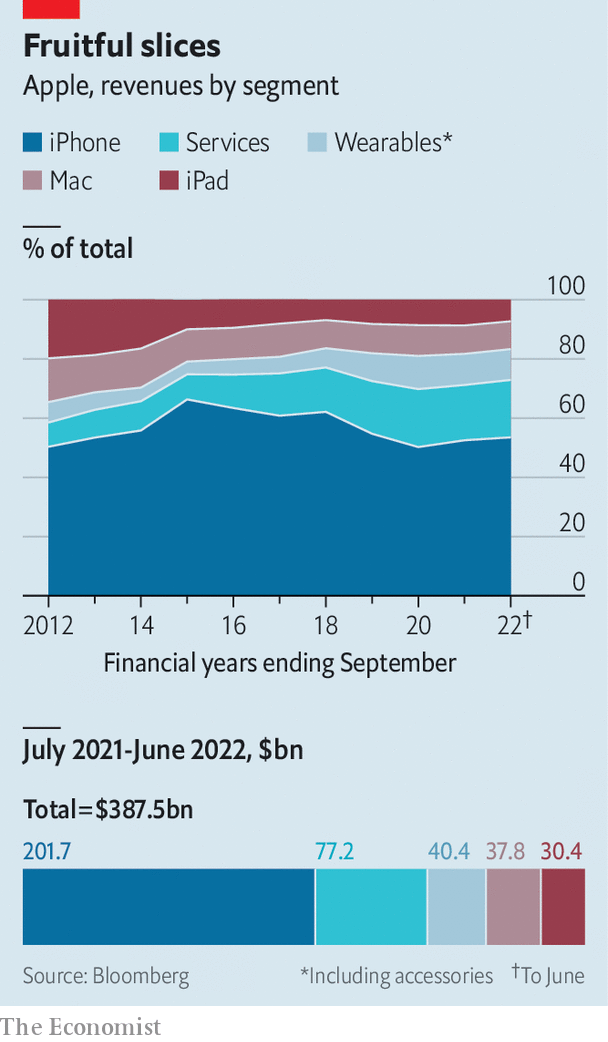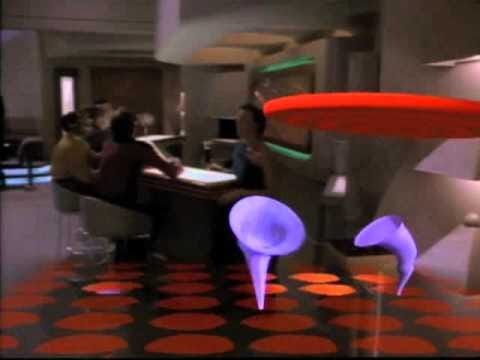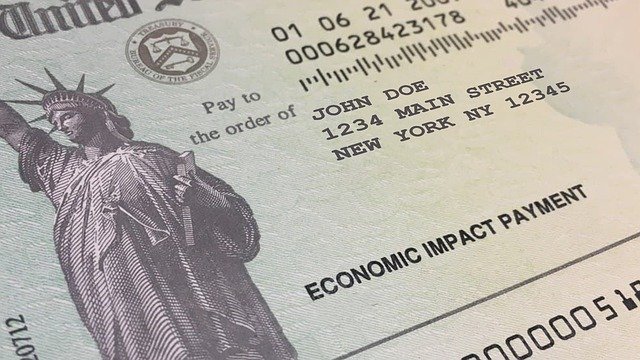Yves here. I know we are supposed to care about Apple’s plans for new product lines, because in fairness, the iPhone was close to revolutionary and perhaps Apple without Steve Jobs could pull off creating or redefining a tech product category. But then again, there were high hopes for Google Glass and the Apple Watch.
Yours truly is not a good person to opine on this topic. While I have sometimes been bleeding edge (a NeXT owner and Internet user in 1991), my instincts are Luddite: unless NewTech offer an obvious advantage and is easy to adopt and use, why should I bother? And that’s before getting to vision issues and the fact that the gear looks big and ugly, so ugly that if there’s any uptake, it might help normalize N95 mask wearing. Reader input welcome.
By Thomas Neuburger. Originally published at God’s Spies
A perfectly ordinary woman enjoying a virtual immersion
“Orwell feared that what we hate will ruin us. Huxley feared that what we love will ruin us.”
—Neil Postman, Amusing Ourselves to Death
We’re taking a short break from politics today to comment on Apple’s Next Big Thing.
First, consider that Apple is a fabulously cash-rich company. Next, that despite some earlier concern that iPhone sales would slow, Apple produced some very good iPhone sales numbers in 2023. By most accounts, the iPhone accounts for much of that cash.
Yet it’s been sixteen years since the iPhone changed the world. The iPhone 1 (called simply the “iPhone” then) was introduced by Steve Jobs in 2007. As a concept it’s been rightly called revolutionary, a must-have device. We call what we live in today a “smart phone world” for a reason.
But what has Apple done big since then, besides flood the market with phones? From the Economist in 2022:
In Apple’s flying-saucer-like headquarters in Cupertino, California, engineers are working on all manner of gadgets that might one day succeed the smartphone. But a big part of Apple’s future is already clear: a growing chunk of revenue and an even larger slice of profits will come not from any product, but from services.

Apple revenue 2012–2022 by segment
So despite the iPhone revenue growth in 2023 (which came largely from its more expensive products, implying upgrades), Apple needs, for its reputation’s sake, a Next Big Thing. Yes, its services business is growing and lucrative. But this description of its services strategy…
Apple’s business model “is evolving from maximising unit growth to maximising installed-base monetisation”, believes Erik Woodring of Morgan Stanley.
…doesn’t say “cutting-edge company,” which is Apple’s brand. (For a painful example of what “maximizing installed-base monetization” means in practice, read this from Ted Gioia. Predatorial stuff.)
While the Economist touts the wisdom of this shift by Apple to monetizing its installed base…
Consumers will doubtless keep buying Apple’s shiny gadgets. [But] From now on, when they do so, they will be acquiring not just swanky new devices for themselves but tiny digital storefronts for Apple.
…the article’s title suggests otherwise: “Apple already sold everyone an iPhone. Now what?”
What’s the next big hardware invention that will do what the iPhone did?
The ‘Swanky New Device’
Which brings us to the point of this post. Apple is about to release a “swanky new device” that some for a while have been calling its Next Big Thing. Meet the Apple Vision Pro.
It looks like a VR headset, and we have seen those. What’s new is the functionality — called “mixed reality” or “augmented reality” — built into it. Here’s one of Apple’s video demonstrations:
Notice the applications, or use-cases. First, Apple touts enhanced entertainment— like immersive panoramas (2:25 in the video just above) and room-size virtual movie screens (at 3:37). This does seem impressive.
Then there’s your workaday life (shown at 4:28). The sell here is that you’re freed from the monitor, which greatly increases the real estate your apps can spread into. Other features include immersive “experiences” that take over your physical space to create a meditation-inducing (or drug-fueled 2001-like) virtual environment.
Critiques of ‘Augmented Reality’ Devices
Several video YouTubers have already weighed in with comments and criticism. Many have in-video ads and other irrelevant material, so I won’t link to them. A search will turn them up. The best I’ve found is this one (“Apple Built The Vision Pro to FAIL, and it’s GENIUS”). The title is deceptive, but the points he makes, especially near the end, are good, well-considered.
If you don’t click through, the main points relate to the importance of people seeing your face — it’s a species thing — and the privacy concerns that helped kill Google Glasses.
It’s likely true that Apple is releasing a “midway” device, a concept definer, like the old Apple Lisa, and that the endpoint device is actual glasses that look like real eyeglasses and lay the virtual world over the physical world in an integrated way. To picture this, imagine walking around town with Google Streetview turned on in your virtual glasses. The crap that appears on your screen (sorry, Google) will appear in your world, integrated and laid over it, moving as you move, responding to your eye movements and gestures.
Yet even if “enhanced reality” devices succeed, what does that mean?
The Meaning and Future of ‘Enhanced Reality’
I want to make a number of points that no one seems to be making about these devices. I’ll do it in summary-style. Longer discussions may come later, but these points already seem nearly complete in themselves.
1. Notice who the “you” is in these Apple-produced presentations.
The “you” in every ad — for soap or cars — is the person the target viewer should identify with. To say that differently, the “you” character tells you who’s the target of the ad. For example, toilet paper ads contain a lot of characters, but “you” is often the mom. Finding the “you” in each ad is an interesting exercise.
Look at the “you” in these ads — the people wearing the goggles — and also the world they live in. “You” in these Apple ads is a multicultural, upper-middle-class, professional woman or man who lives in comfort. The “you” is either single or as in the first video above (“Introducing”), with children, either teenaged (shown at 1:18) or younger (at 2:00). The children are very well loved, and in both of these examples, the “you” is quite well turned out.
2. Note how often the word “experiences” is used. This whole world is, in essence, not about information, but about experiences, moments of pleasure. You don’t see “efficiency” sold in workplace sections of the ads. It’s all about the feel.
This is, in effect, a drug, more powerful than the social media drugs that keep people glued to their iPhones and Androids.

From the Star Trek Next Generation episode “The Game”
Reminds me of Neil Postman’s great book (and title) Amusing Ourselves to Death. Wikipedia’s description is as good as any:
Postman distinguishes the Orwellian vision of the future, in which totalitarian governments seize individual rights, from that offered by Aldous Huxley in Brave New World, where people medicate themselves into bliss, thereby voluntarily sacrificing their rights.
3. Finally, consider the broader context. When climate-caused chaos strikes us with full force — large-scale migrations; collapsed economies; collapsed food and water supplies; wars and pandemics; governments that suddenly find they can help only the rich — how much new tech will be sold to people in that world?
We’re a planet of roughly eight billion. When two billion have died with more on the way, what’s Apple’s market then? What’s anyone’s, who’s not selling food and water? Will the people in these Apple ads — the comfortable, well turned out — even exist?
Selling High Tech Is Also a Political Act
Which leads me to my final point. I said at the start we’re “taking a short break from politics.” But in fact, I misspoke.
Everything Apple does is political, since its actions: a) distract from problems that will end technological life for thousands of years, and b) sell the idea that tech has superpowers, which means tech solutions to those problems can be counted on. Even its manufacturing is political.
So yes, think about Apple’s New Thing as the news rolls out. Consider the immersion experience as a pleasure to have. Dream of the day when that experience is yours.
But consider the context as well. It’s a drug delivery system that hides the future.


